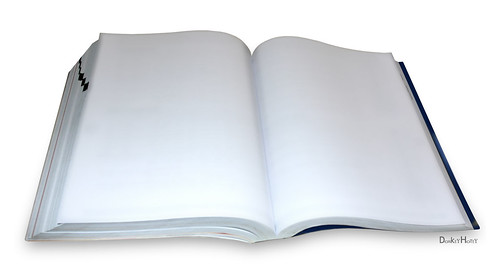Should you give your chapters titles, or just number them all the way through? How do readers feel about it? What's the point of doing it? Chapter titles might seem like a little detail, but any book is nothing more than a bunch of details laid out in a pleasing manner. Some readers have very strong opinions about chapter titles, and there may be a certain stigma that comes with using them. So the main question is: to title, or not to title?
Chapter Titles
Using titles for chapters (example: The Bright Red Balloon) as opposed to simple numbers (Chapter 3) adds another layer to any book. When used properly, chapter titles can make a very big impact on readers. But chapter titles can bring certain negative elements to your story as well.
- The Good
Chapter titles help to set the tone for what's coming up in the next few pages. A gripping chapter title can completely arrest a reader, and make them keep reading when they might have closed the book to continue another day. Good chapter titles can show off a writer's particular flair and creativity as well, truly acting as something extra and enticing in the story.
- The Bad
In some readers' minds, chapter titles are linked to children's books. Children's books very commonly use chapter titles, and though other books do as well it's standard through the genre to use chapter titles. Non-fiction works also commonly use chapter titles; generally they are somewhat long and very explanatory in nature and this sets these works apart from the more literary titles you'll find in fiction.
- The Ugly
Chapter titles can weigh a story down as much as they can elevate it. Using a theme for chapters, for example, can be very interesting but also very tricky. Make sure you choose a theme that makes sense. Seasons or states of weather, for example, could set a specific tone and mood for each chapter (The Dawn, Dusk, Rainy Day, Winter, etc.). Random colors, on the other hand, may feel nonsensical to the reader (Blue, Black, Yellow, Green) and become off-putting. Don't think it hasn't been tried. Everything's been tried. Avoid ugly chapter titles by repeating yours out loud to yourself and thinking of the imagery it brings to mind. Does that fit the pages that follow? Does it make you want to read those pages? Think like a reader, and your titles will do what you want them to do.
Forget That
Many fine books have no chapter titles, just a plain reference at the top of the page. You certainly don't have to have them, if you don't want them, but it's not a bad idea to employ certain tricks to help keep the pace of your story moving. It can be somewhat disconcerting to be following a tale, and then stumble across a simple "Chapter 4." What's going to make me continue reading?
- The Good
Numbered chapters are simple, and they won't take anything away from the prose as readers are moving through the story. No one's stopping to take a second look at a number four, so your readers aren't pausing to discern the meaning of some enticing title that's inserted itself into the middle of your tale. Numbered chapters help to set a serious tone for a book, and they keep readers engaged in the story while still offering natural stopping points.
- The Bad
Maybe too many stopping points. You don't want someone consistently reading just one chapter a day of your work -- at least, not really. Ideally, you want them to get so caught up in the story they've just got to keep going. You want them to get to the end of that chapter and think, no way I can stop now! as they turn another page. That's why it's a good idea to use a little trickery, here and there, and break disciplined reading habits whenever possible. Instead of dividing the book neatly into numbered chapters that each naturally stop and start at the end and beginning of certain scenes, insert a few cliffhanger chapter endings. Begin an exciting new scene toward the end of a chapter, only to leave the reader hanging in a climactic moment. If it's done well, they will barely even notice that they've slipped into a whole new chapter -- they're just trying to get to the juicy stuff.
- The Ugly
What's so wrong with numbered chapters? They're simple, they're easy and frankly, they're time-saving. Who wants to come up with 20-something different titles? Wasn't titling the book hard enough? Here's the problem: some readers hate it. For whatever reason, a certain contingent of readers are completely turned off by numbered chapters. Some find it to be boring -- or worse, lazy. It's a disheartening truth that all writers must face, but readers form opinions. Isn't that what writers want them to do? Once they start forming opinions about your setting, your plot and your characters, every tiny detail is fair game. Writers have to look at all the aspects of every decision they make -- good, bad and ugly -- and go from there. It's your book. Win them over however you think is best.



















